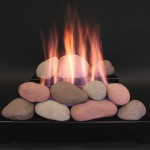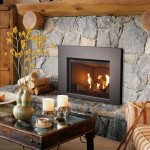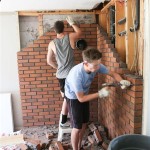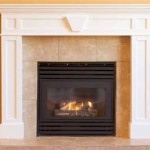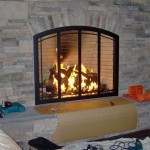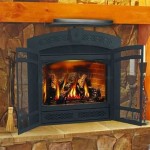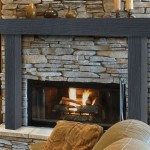Understanding the Thermopile System in Heatilator Gas Fireplaces
Heatilator gas fireplaces are a popular choice for homeowners seeking supplemental heating and the ambiance of a traditional fireplace without the mess and maintenance associated with burning wood. A crucial component in many Heatilator gas fireplace models, especially those requiring standing pilots or millivolt systems for ignition, is the thermopile. This article provides a detailed explanation of the thermopile system, its function within a Heatilator gas fireplace, common issues, and troubleshooting steps.
The thermopile is essentially a thermoelectric generator. It converts thermal energy (heat) directly into electrical energy. In the context of a gas fireplace, the thermopile is responsible for generating the small electrical current needed to operate the gas valve and maintain the pilot light. Without a functioning thermopile, the pilot light will not stay lit, preventing the main burner from igniting and rendering the fireplace inoperable.
Understanding how the thermopile functions is critical for diagnosing and resolving issues with a Heatilator gas fireplace. Its relatively simple design belies its importance in the overall operation of the appliance. Ignoring problems with the thermopile can lead to unnecessary expenses, as many homeowners mistakenly believe the entire fireplace needs replacement when often the thermopile is the only faulty component.
Key Point 1: The Function of the Thermopile
The thermopile in a Heatilator gas fireplace is comprised of numerous thermocouples connected in series. A thermocouple consists of two dissimilar metal wires joined at two points. When one junction is heated and the other remains cooler, a voltage is produced due to the Seebeck effect. This effect is a fundamental principle of thermoelectricity. In a thermopile, numerous thermocouples work together to amplify this effect, generating a usable voltage.
In a Heatilator gas fireplace, the hot junction of the thermopile is positioned within the pilot flame. The pilot flame heats the hot junction, creating a temperature difference between the hot and cold junctions. This temperature difference generates a small direct current (DC) voltage. This voltage, typically measured in millivolts (mV), is used to energize the gas valve’s electromagnet. When sufficient voltage is generated, the electromagnet opens the gas valve, allowing gas to flow to the main burner.
The thermopile's voltage output is directly proportional to the temperature difference between its hot and cold junctions. A stronger pilot flame and a more efficient heat transfer to the hot junction will result in higher voltage output. Conversely, a weak pilot flame or poor heat transfer will result in lower voltage output, potentially preventing the gas valve from opening.
Furthermore, the generated voltage must be sufficient to overcome the resistance within the gas valve and the wiring connecting the thermopile to the valve. Corrosion, loose connections, and faulty wiring can all increase resistance, reducing the voltage that reaches the valve and potentially preventing it from opening. The required voltage varies slightly depending on the specific Heatilator model and the gas valve used.
The thermopile's performance degrades over time due to oxidation, corrosion, and physical damage from the constant exposure to heat. Routine maintenance, including cleaning and inspection, can help to prolong the life of the thermopile and ensure reliable operation of the gas fireplace.
Key Point 2: Common Issues and Troubleshooting the Thermopile
One of the most common issues associated with a Heatilator gas fireplace that utilizes a thermopile is the pilot light failing to stay lit. This is often indicative of a malfunctioning or weakened thermopile. However, before replacing the thermopile, it is crucial to rule out other potential causes.
First, the pilot light assembly should be cleaned. Dust, debris, and soot can accumulate on the pilot orifice, reducing the flame size and hindering the thermopile's ability to generate sufficient voltage. A small brush or compressed air can be used to clear the orifice. Ensure the gas supply is turned off before performing any cleaning or maintenance.
Second, the pilot flame should be inspected for proper size and placement. The flame should be enveloping the thermopile's hot junction, ensuring maximum heat transfer. If the flame is too small or misdirected, the gas pressure to the pilot light may need adjustment. This should be performed by a qualified technician.
Third, the wiring connections between the thermopile and the gas valve should be checked for corrosion and looseness. Corroded connections can significantly increase resistance, reducing the voltage reaching the gas valve. Loose connections can create intermittent contact, causing the pilot light to flicker or extinguish completely. Clean and tighten any corroded or loose connections.
If the pilot light and wiring appear to be in good condition, the thermopile's voltage output should be tested. A multimeter can be used to measure the DC voltage output of the thermopile when the pilot light is lit. The voltage should be within the manufacturer's specified range, typically printed on the thermopile itself or found in the fireplace's service manual. If the voltage is significantly below the specified range, the thermopile is likely failing and needs replacement.
When replacing a thermopile, it is essential to use a replacement part that is specifically designed for the Heatilator model. Using an incompatible thermopile can result in improper operation or even damage to the fireplace.
Key Point 3: Maintaining Thermopile Performance and Longevity
Preventative maintenance is crucial for ensuring the long-term performance and longevity of the thermopile in a Heatilator gas fireplace. Regular cleaning and inspection can help to identify and address potential issues before they escalate into more significant problems.
Annual cleaning of the pilot light assembly is recommended. This removes dust, debris, and soot that can accumulate over time, hindering the pilot flame's size and stability. A soft brush or compressed air can be used to clean the orifice and surrounding components.
The wiring connections between the thermopile and the gas valve should be inspected annually for corrosion and looseness. Corroded connections should be cleaned and treated with a corrosion inhibitor. Loose connections should be tightened to ensure a secure electrical connection.
The pilot flame should be periodically inspected for proper size and placement. A weak or misdirected flame can indicate a problem with the gas pressure or the pilot light assembly. If the flame is not properly enveloping the thermopile's hot junction, the gas pressure should be adjusted by a qualified technician.
Consider the positioning of the thermopile within the pilot flame. Over time, physical shifting can occur that reduces its efficiency. Ensuring the tip is properly positioned in the hottest part of the flame will maximize voltage generation.
Heatilator provides comprehensive information and maintenance schedules for its gas fireplaces. Consulting the owner's manual for specific recommendations for the particular model is highly advised. Following these guidelines will help to ensure the reliable operation of the thermopile and the overall performance of the gas fireplace.
In summary, the thermopile is a vital component of many Heatilator gas fireplaces, responsible for generating the electrical current needed to operate the gas valve. Understanding its function, common issues, and maintenance requirements is crucial for ensuring the reliable operation of the fireplace. By following the recommendations outlined in this article, homeowners can maximize the lifespan and performance of their thermopile and enjoy the warmth and ambiance of their Heatilator gas fireplace for years to come. Regular inspection and preventative maintenance will contribute significantly to avoiding unnecessary repairs and ensuring a safe and efficient heating appliance.

24 750mv Thermopile For Heat Glo Heatilator Fireplace Replacement Fi

750mv Thermocouple For Heat Glo Heatilator Fire Gas Stoves Oven 36inch Aluminum Com

Heatilator Thermopile Part 2103 512 Same Day

Heatilator Heirloom 42 Traditional Direct Vent Natural Gas Fireplace Us

Heatilator Caliber 42 Traditional Top Rear Direct Vent Propane Gas Fi Us Fireplace

Heatilator 060 512 Thermopile 750mv

Heatilator Element 40 Traditional Uninsulated Radiant Heat Wood Burni Us Fireplace

Heatilator Direct Vent Fireplace Natural Gas Sit Pilot Assembly 30200 Bourlier S Barbecue And

68577 Heatilator Thermopile 750mv Heatilatorparts Com

Heatilator Amp Heat N Glo Natural Gas Pilot Assembly 4021 736 Com
Related Posts


